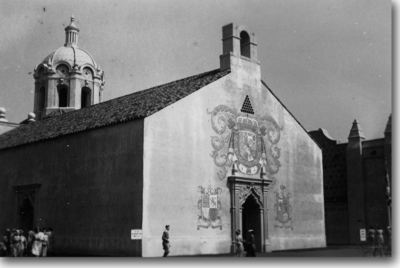"In 1939 as the nation was emerging from a decade-long depression, there were two World's Fairs being organized at opposite ends of the continent. In the West, there was the Golden Gate International Exhibition, the last of the old style world's fairs, celebrating the completion of the Bay Bridge and the Golden Gate Bridge.

In the East, was the New York World's Fair, the first of its kind, a fair that looked to the future and the modern era. Nevada was promoting itself to the nation as the "One Sound State" without state income taxes or inheritance taxes, trying to attract the wealthy to relocate there. Governor Edward P. Carville and the state legislature planned to send exhibits to both fairs. They had set up separate commissions and had set aside state funds to promote Nevada on both shores.
The commissions had met and had begun to design exhibits. The engineers at the State Highway Department designed a working model of the new Hoover Dam. It was too big for the smaller San Francisco Fair, so the commissioners scheduled it for New York. There were problems and miscommunications from the outset when the Nevada commission discovered the rent was $10,000, almost half their funds. They negotiated the cost to $8,000 for the first year and if the Fair ran a second year, it would be free, but when the commissioners arrived in New York, there was no record of the agreement and they were required to pay $9,600 for the first year and the full amount for the next.
The commissioners had arranged for a state highway department crew to transport the model dam to New York, set it up and operate it during the Fair, but they ran afoul of the local unions which had an exclusive contract with the Fair organizers to set up and run exhibits. The costs were exorbitant, and bids for construction of the exhibit ran as high as $14,995. The electrical union demanded that a full-time operator be present at all times during the fair. Fair organizers could not guarantee that the exhibit would not be sabotaged if the state refused to pay the union's excessive labor charges, so the commissioners stopped payment on the rent check, packed up the exhibit and went home.
The commissioners had arranged for a state highway department crew to transport the model dam to New York, set it up and operate it during the Fair, but they ran afoul of the local unions which had an exclusive contract with the Fair organizers to set up and run exhibits. The costs were exorbitant, and bids for construction of the exhibit ran as high as $14,995. The electrical union demanded that a full-time operator be present at all times during the fair. Fair organizers could not guarantee that the exhibit would not be sabotaged if the state refused to pay the union's excessive labor charges, so the commissioners stopped payment on the rent check, packed up the exhibit and went home.
The model of Hoover Dam was exhibited in the Federal building at the Golden Gate International Exposition, the last time Nevada officially participated in a world's fair. Nevada decided in 1939 to build its own state museum and spend its money bringing visitors to the state itself instead of sending exhibits to world's fairs."
Christopher G. Driggs, "Nevada at the World's Fair," Nevada Historical Society Quarterly 42 (Fall 1999): p.91-139. Condensed and edited for this publication by Jeff Kintop, Nevada State Archivist.
- Return to:
- Court of States
- Government Zone
